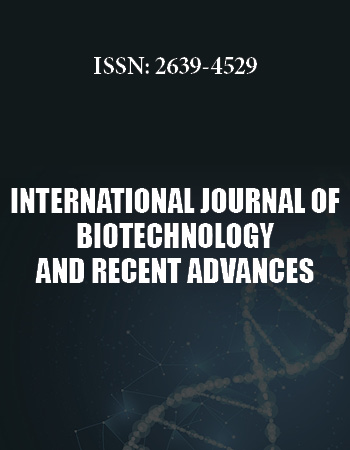International Biotechnology and Research Conference
April 25-27, 2018 Rome, Italy
The Mechanism of Action of Zingerone in the Pacemaker Potentials of Interstitial Cells of Cajal in Murine Small Intestine
1Division of Longevity and Biofunctional Medicine, Pusan National University School of Korean Medicine, Republic of Korea
2Healthy Aging Korean Medical Research Center, Pusan National University School of Korean Medicine, Republic of Korea
Background: Zingerone, a major component found in ginger root, is clinically effective for the treatment of various diseases. Interstitial cells of Cajal (ICCs) are the pacemaker cells responsible for slow waves in the gastrointestinal (GI) tract.We investigated the effects of zingerone on the pacemaker potentials of ICCs to assess its mechanisms of action and its potential as a treatment for GI tract motility disorder.
Methods: We isolated ICCs from small intestines, and the whole-cell patch-clamp configuration was used to record the pacemaker potentials in cultured ICCs.
Results: Under the current clamping mode, zingerone inhibited pacemaker potentials of ICCs concentration-dependently. These effects were blocked not by capsazepine, a transient receptor potential vanilloid 1 (TRPV1) channel blocker, but by glibenclamide, a specific ATP-sensitive K+channel blocker. Pretreatment with SQ-22536 (an adenylate cyclase inhibitor), LY294002 (a phosphoinositide 3-kinase inhibitor), and calphostin C (a protein kinase C (PKC) inhibitor) did not block the effects of zingerone on the pacemaker potentials relative to treatment with zingerone alone. However, zingerone-induced pacemaker potential inhibition was blocked by 1H[1,2,4] oxadiazolo [4,3a] quinoxalin1one (ODQ; a guanylate cyclase inhibitor), KT5823 (a protein kinase G (PKG) inhibitor), and L-NAME (a non-selective nitric oxide synthase (NOS) inhibitor). In addition, zingerone stimulated cyclic guanosine monophosphate (cGMP) production in ICCs. Finally, pretreatment with PD98059 (a p42/44 mitogen-activated protein kinase (MAPK) inhibitor), SB203580 (a p38 MAPK inhibitor), and SP600125 (cJun Nterminal kinases (JNK)specific inhibitor) blocked the zingerone-induced pacemaker potential inhibition.
Conclusion: These results suggest that zingerone concentration-dependently inhibits pacemaker potentials of ICCs via NO/cGMP-dependent ATP-sensitive K+channels through MAPK-dependent pathways. Taken together, this study shows that zingerone may have the potential for development as a GI regulation agent.
Biography:
Byung Joo Kim, has completed his PhD from Seoul National University and also postdoctoral studies from Seoul National University. He is the Professor at the Division of Longevity and Biofunctional Medicine, Pusan National University School of Korean Medicine, Yangsan, Republic of Korea. His research interest is in the action mechanisms of traditional medicine and interstitial cells of Cajal in gastrointestinal tract.


